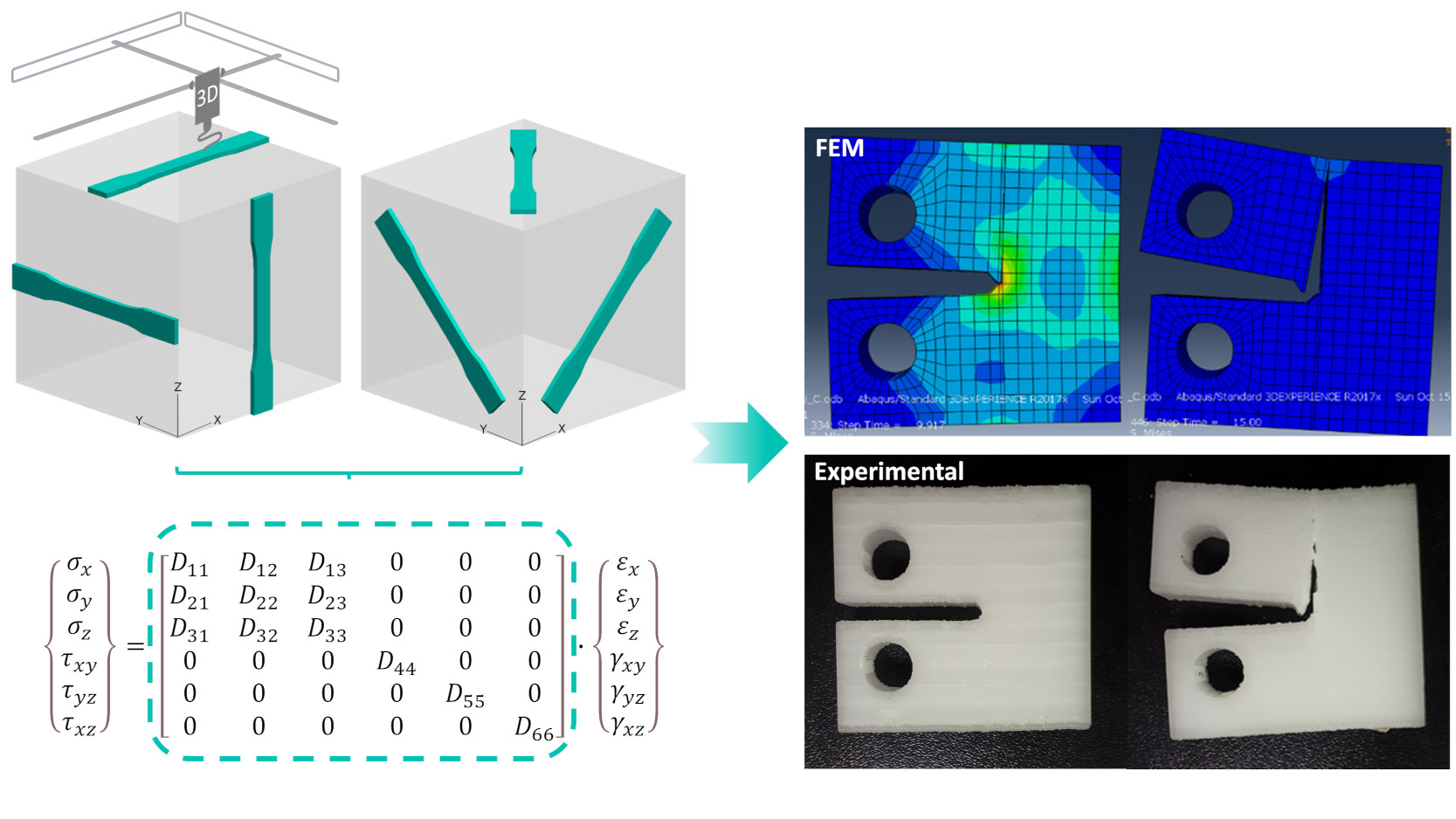New paper out!
In our latest paper published in Elsevier’s Composite Structures journal, we investigate the numerical simulation of the failure mechanism of 3D-printed structures by modelling them as laminate composites.
The use of a statistical approach (Anova) allowed us to analyse the influence of 3D-printing parameters on the mechanical properties and tune the Finite Element Simulation to simulate the real experimental failure behaviour.
The numerical approaches (eXtended FEM analysis and cohesive method) correctly predict the mechanical failure of the 3D-printed parts, which is of paramount importance to allow the use of these innovative techniques in engineering applications.
Check out the paper on the journal website or on ResearchGate
Additively Manufactured parts are known to be heavily affected by the 3D-printing parameters, and their layered morphology represents a challenge in the mechanical design analysis for engineering applications. In this work, the fracture mechanics of 3D-printed polylactic acid (PLA) samples along different printing directions was simulated as a laminate composite using different numerical approaches, i.e. extended Finite Element (XFEM) and cohesive method. Tensile specimens were 3D-printed via Fused Filament Fabrication in different directions and tested to build the stiffness matrix needed to define the constitutive behavior of the 3D-printed material. Moreover, the influence of different printing parameters (i.e. printing direction, infill, nozzle temperature and perimeter) on the mechanical response was investigated using the statistical approach analysis of variance (Anova). The statistical analysis has shown a strong influence of the printing direction and the perimeters on the resulting mechanical properties, with tensile strength ranging from 52 MPa in the best case to 4 MPa in the worst. The performed FEM analysis correctly predicts the fracture behavior of the 3D-printed samples, with an error on the predicted failure load well below 7%. The investigated model, thus, represents a useful analysis approach to broader the use of 3D printing in engineering applications.
https://www.sciencedirect.com/science/article/pii/S0263822323007250


